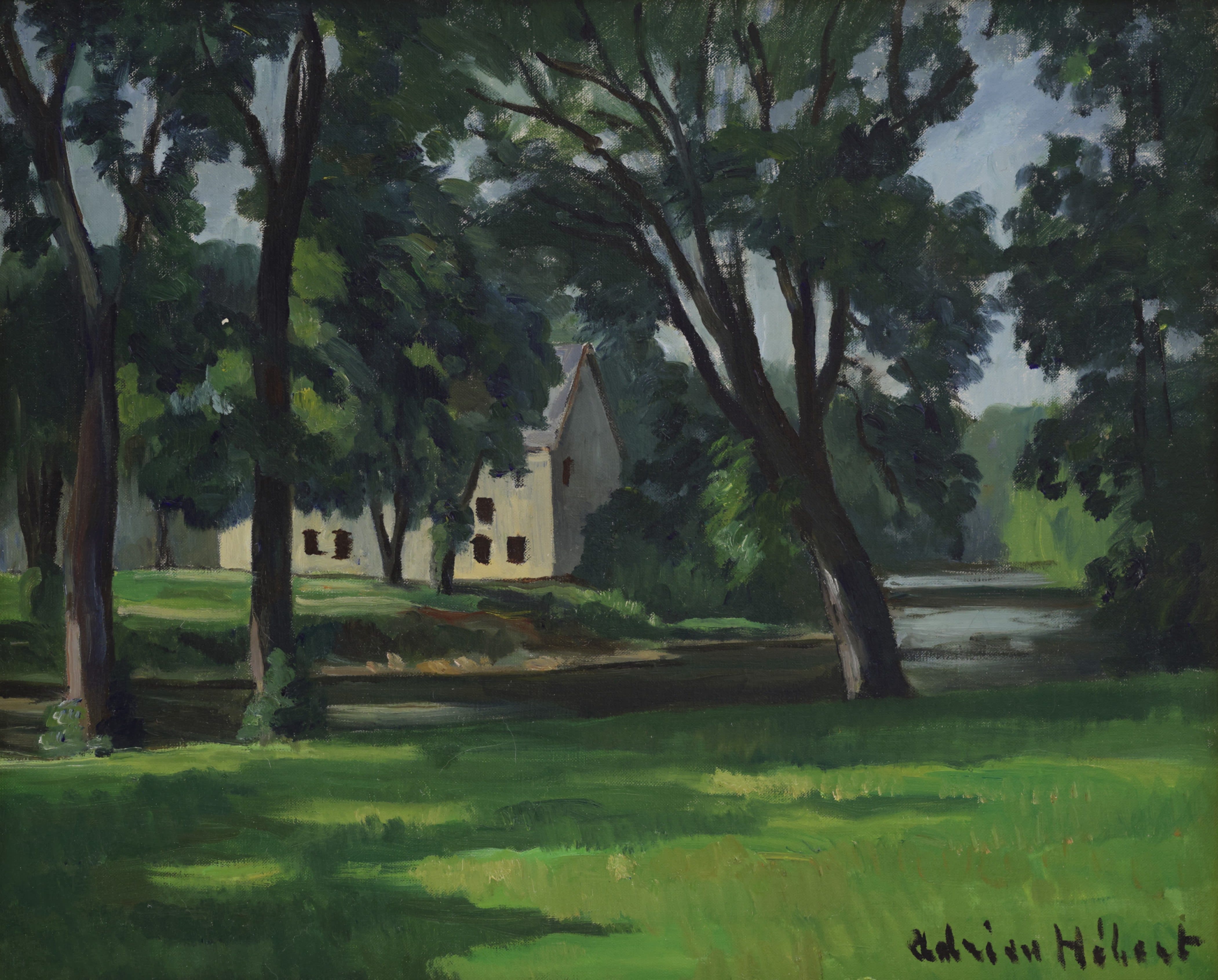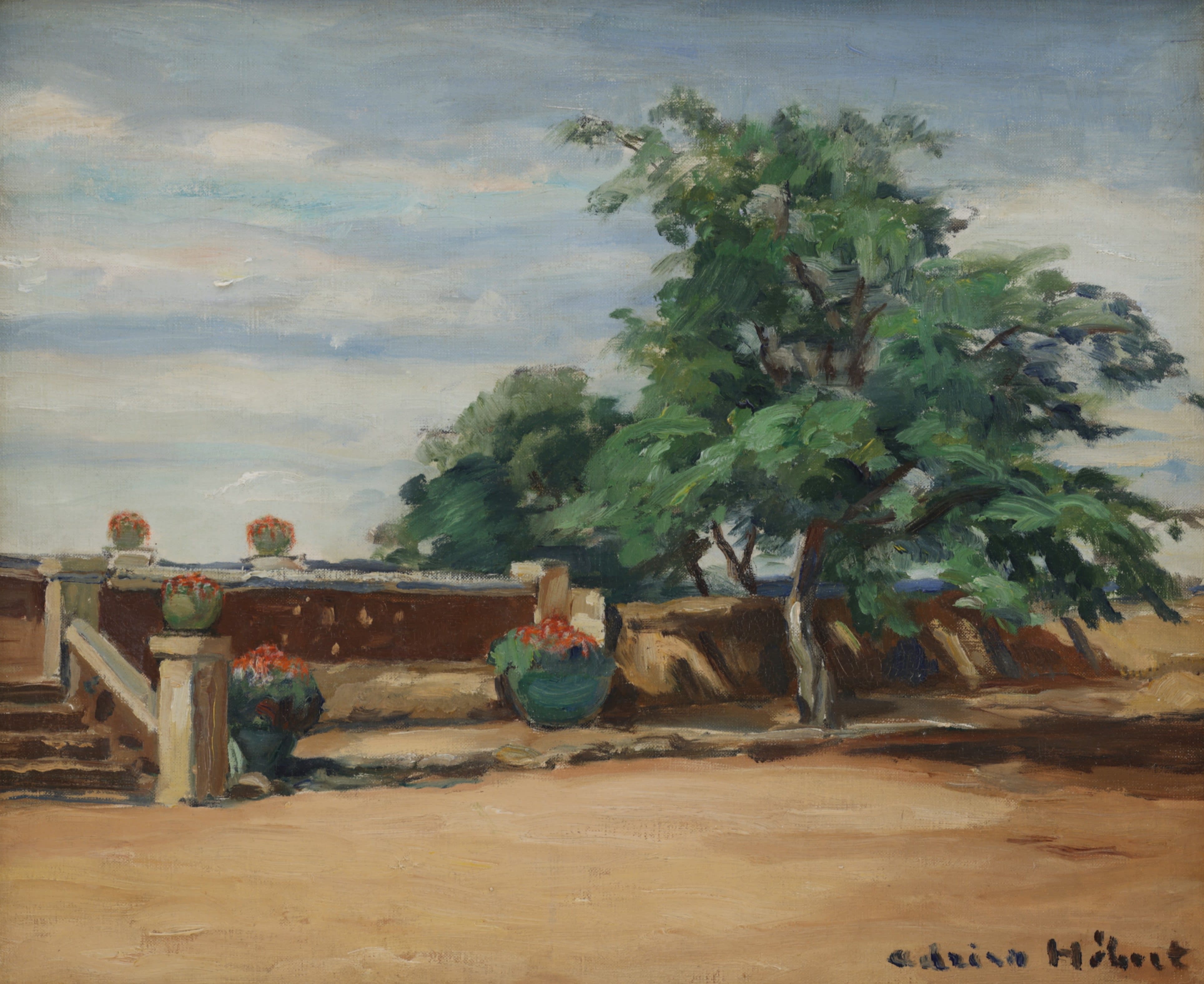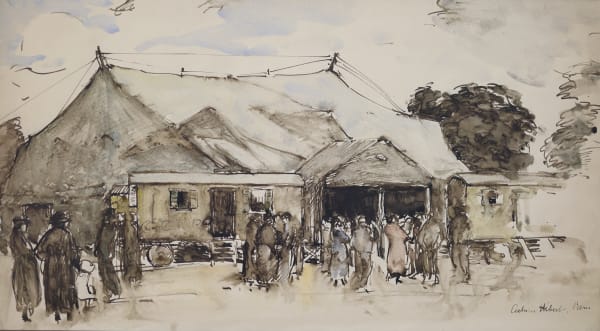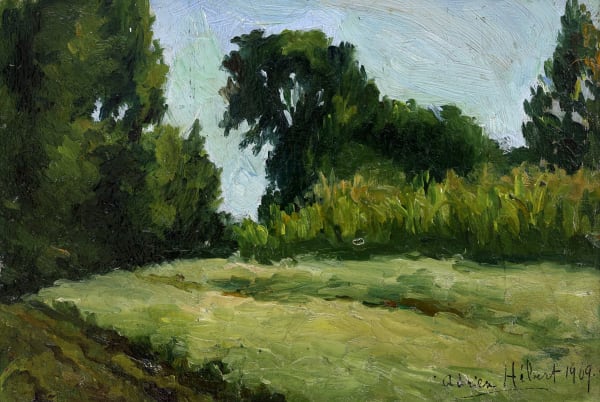Adrien Hébert (April 12, 1890-June 26, 1967), a distinguished painter born in Paris, established his artistic foundations in Canada, where he settled after emigrating from France at the age of three. The son of renowned sculptor Louis Philippe Hébert, Adrien's early life oscillated between Canada and France, marked by his father's significant commissions, including those for the Québec Parliament Buildings.

Adrien Hebert; Rivière du Nord
Hébert's formal education in the arts spanned several influential teachers, including Edmond Dyonnet, Joseph-Charles Franchière, and Joseph Saint-Charles at Montréal's Conseil des arts and manufactures, and later, William Brymner at the Art Association of Montréal. This institution would later evolve into the Montreal Museum of Fine Arts, where Hébert's artistic sensibilities further matured.
1909 marked the debut of Hébert's works at the AAM's Salon du printemps, a relationship that would endure for decades. His paintings consistently graced the annual exhibitions of the Royal Canadian Academy of Arts from 1910 until 1960, highlighting his persistent presence in the Canadian art scene. Hébert's early forays into exhibition and publication with his brother Henri, including the avant-garde review Le Nigog, signaled his burgeoning role in modernizing Québec's artistic landscape.
 Adrien Hebert; Rooftops
Adrien Hebert; Rooftops
Hébert's artistic style underwent significant evolution during a 1922-23 sojourn in France, where the influence of Cézanne became apparent in his portrayal of landscapes and Parisian life. Upon returning to Montréal, he found his muse in the bustling port, drawing inspiration from its architecture and activity. His depictions of the urban landscape soon became a hallmark, capturing the vibrancy of city life, its inhabitants, and its ever-changing streets.
In 1931, Hébert's reputation earned him a commission from the city of Montréal for a historical piece on Jacques Cartier's arrival at Hochelaga. This year also saw the exhibition of twenty canvases representing his favourite subjects at the Galerie A. Barreiro in Paris. Ten years later, his contributions to art were further recognized by his election to the Royal Canadian Academy of Arts. Throughout his career, Hébert also taught drawing for the Catholic School Board of Montréal, serving for 35 years and significantly impacting local art education.

Adrien Hebert; Jardinieres
After inheriting his brother's studio, Hébert's artistic explorations continued, including painting expeditions to Chicoutimi and an award-winning piece featuring the S.S. Empress of Canada. His travels to Africa and France in the mid-1950s resulted in exhibitions that showcased a diverse array of subjects and locales. In March 1931, he exhibited 20 canvases in Paris, and in 1941, he was made a full member of the Royal Canadian Academy. His work also won the Jessie Dow Prize three times, reflecting his esteemed status within the artistic community.
Identifying foremost as an urban painter, Hébert's legacy is intertwined with the cityscapes he so vividly brought to life. His works were celebrated posthumously, with the National Gallery of Canada organizing a touring exhibition in 1971, and the Musée du Québec honoring him with an exhibition in 1993. One month after his death in Montréal on June 26, 1967, Mayor Jean Drapeau presented one of Hébert's Port-of-Montréal scenes to General Charles de Gaulle during his visit to Expo 67. Adrien Hébert's enduring vision as an artist remained imprinted on the Canadian art scene long after his death.




